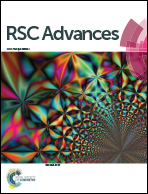Synthesis and properties of chemiluminescent acridinium esters with different N-alkyl groups†
Abstract
Chemiluminescent acridinium dimethylphenyl esters are highly sensitive labels that are widely used in automated assays for clinical diagnostics. Light emission from these labels and their conjugates is triggered by treatment with alkaline peroxide. In the current study, we provide a comprehensive examination of how polarity of the N-alkyl group in acridinium dimethylphenyl esters and their protein conjugates affect their properties. We describe a new synthetic strategy for the manipulation of the N-sulfopropyl group in acridinium esters which facilitates the attachment a structurally simple sulfobetaine zwitterion to the acridinium nitrogen. Our studies are the first and most detailed to date and they indicate that N-alkyl groups containing charge-neutral sulfobetaines in acridinium dimethylphenyl esters as exemplified by the labels 3 and 6 offer significant advantages over commonly used N-sulfopropyl groups. These include faster emission kinetics, improved chemiluminescence stability and lower non-specific binding to magnetic microparticles with different surfaces. Acridinium ester 3 is a particularly attractive new label because it contains a structurally simple N-alkyl group with a sulfobetaine zwitterion and its synthesis is relatively straightforward from the corresponding N-(3-chloropropyl) substituted acridinium ester precursor.


 Please wait while we load your content...
Please wait while we load your content...